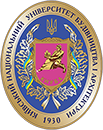Особливості управління комунікаціями із зацікавленими сторонами в природоохоронних проєктах у межах сучасного міста
1. Alaa-Aldin Sarhan, Yasser Farghaly, Rania Elsayed, Measures and Attributes for Sustainability of Parks, Procedia Environmental Sciences 34, 2016, pp. 453 – 460. doi:10.1016/j.proenv.2016.04.040.
2. Myalkovsky R., Plahtiy D., Bezvikonnyi P., Horodyska O., & Nebaba K., Urban parks as an important component of environmental infrastructure: Biodiversity conservation and recreational opportunities, Ukrainian Journal of Forest and Wood Science, 14 (4), 2023, 57–72. doi:10.31548/forest/4.2023.57.
3. Aly D., Dimitrijevic B., Systems approach to the sustainable management of urban public parks, Urban Forestry & Urban Greening, Volume 68, February 2022. Article 127482. doi:10.1016/j.ufug.2022.127482.
4. Лисенко В. І., Кошелєв О. І., Кошелєв В. О., Писанець О. М. Перспективи збереження біорізноманіття та зоокомплексів у національному природному парку «Джарилгацький» шляхом зонування території та приєднання нових ділянок. Біорізноманіття та роль тварин в екосистемах: Матеріали VІІІ Міжнародної наукової конференції. Днепр : Ліра, 2015. С. 39–42.
5. Вернігорова Н. В. Інституційні новації розвитку міських парків в Україні. Оглядова стаття. Економічний журнал Одеського політехнічного університету, № 2 (24), 2023. С. 35–43.
6. Mccormick K. (Ed.), Cities, Nature and Innovation: New Directions, Lund University, 2020.
7. Inglis, Judi, Best practice in strategic park management: towards an integrated park management model, 2005. URL: https://sustain.pata.org/wp-content/uploads/2014/12/Inglis_ParkMgtModel.pdf.
8. Siti Afiqah Mohammad Sabri, Zakiah Ponrahono. Greening the city: criteria and indicators for evaluating the effectiveness of small urban parks in promoting urban resilience to climate change. Planning Malaysia 22 (1): 155–165. doi:10.21837/pm.v22i30.1430.
9. Про затвердження Методичних рекомендацій щодо розроблення проєктів створення природних територій та об'єктів природно-заповідного фонду України. Наказ Міністерства екології та природних ресурсів України № 306 від 21.08.2018. URL: https://zakon.rada.gov.ua/rada/show/v0306737-18/sp:max100#Text.
10. Гусєва Ю. Ю., Мартиненко О. С., Чумаченко І. В. Динамічній аналіз методів та інструментальних засобів управління зацікавленими сторонами проектів. Управління розвитком складних систем. Київ, 2018. № 34. С. 27 – 36.
11. Стандарт з управління проєктами та Настанова до зводу знань з управління проєктами. Настанова PMBOK. Сьоме видання. USA: PMI, 2021. URL: https://pmiukraine.org/wp-content/uploads/2022/08/PMBOK7_Ukr_ForPersonalUseOnly.pdf.
12. Керівництво з управління інноваційними проєктами і програмами організацій: монографія / переклад на українську мову за ред. проф. Ярошенка Ф. О. Київ: Новий друк, 2010.
13. Individual Competence Baseline for Project, Programme and Portfolio Management (IPMA ICB). IPMA. Version 4.0. 2015. URL: https://products.ipma.world/wp-content/uploads/2016/03/IPMA_ICB_4_0_WEB.pdf.
14. Хрутьба Ю. С., Морозов В. В., Хрутьба А. С. Особливості взаємодії зацікавлених сторін у природоохоронних проєктах. Управління розвитком складних систем: зб. наук. праць Київського національного університету будівництва і архітектури. Київ: КНУБА, 2019. № 37. С. 32–39.
1. Alaa-Aldin Sarhan, Yasser Farghaly, Rania Elsayed, Measures and Attributes for Sustainability of Parks, Procedia Environmental Sciences 34, 2016, pp.453 – 460. doi:10.1016/j.proenv.2016.04.040.
2. Myalkovsky R., Plahtiy D., Bezvikonnyi P., Horodyska O., & Nebaba K. (2023). Urban parks as an important component of environmental infrastructure: Biodiversity conservation and recreational opportunities, Ukrainian Journal of Forest and Wood Science, 14 (4), 57–72. doi:10.31548/forest/4.2023.57.
3. Aly D., Dimitrijevic B. (2022). Systems approach to the sustainable management of urban public parks, Urban Forestry & Urban Greening, Volume 68, February 2022. Article 127482. doi:10.1016/j.ufug.2022.127482.
4. Lysenko V., Koshelev O., Koshelev V., Pisanets O. (2015). Prospects for the conservation of biodiversity and zoocomplexes in the Dzharylgach National Nature Park through zoning of the territory and annexation of new areas, Biodiversity and the role of animals in ecosystems: Materials of the VIII International Scientific Conference, Dnipro: Lyra, 2015, pp. 39–42.
5. Vernigorova N. (2023). Institutional innovations for the development of urban parks in Ukraine. Review article, Economic journal Odessa polytechnic university, № 2 (24), pp. 35–43.
6. Mccormick K. (Ed.), Cities, Nature and Innovation: New Directions, Lund University, 2020.
7. Inglis, Judi (2005). Best practice in strategic park management: towards an integrated park management model. URL: https://sustain.pata.org/wp-content/uploads/2014/12/Inglis_ParkMgtModel.pdf.
8. Siti Afiqah Mohammad Sabri, Zakiah Ponrahono. Greening the city: criteria and indicators for evaluating the effectiveness of small urban parks in promoting urban resilience to climate change. Planning Malaysia 22 (1): 155–165. doi:10.21837/pm.v22i30.1430.
9. On Approval of Methodological Recommendations for the Development of Projects for the Creation of Natural Areas and Objects of the Natural Reserve Fund of Ukraine, Order of the Ministry of Ecology and Natural Resources of Ukraine No. 306 dated 21.08.2018. URL: https://zakon.rada.gov.ua/rada/show/v0306737-18/sp:max100#Text.
10. Guseva Yu. Yu. Martynenko O. S., Chumachenko I. V. Dynamic analysis of methods and tools for project stakeholder management. Management of the development of complex systems, 2018. № 34. pp. 27 – 36.
11. Project Management Standard and Guide to the Project Management Body of Knowledge (PMBOK), Seventh Edition, USA: PMI, 2021. URL: https://pmiukraine.org/wp-content/uploads/2022/08/PMBOK7_Ukr_ForPersonalUseOnly.pdf.
12. Guidance on managing innovative projects and programs of organizations: Monograph, Translation into Ukrainian edited by Prof. Yaroshenko F.O., Kyiv: Novy druk, 2010.
13. Individual Competence Baseline for Project, Programme and Portfolio Management (IPMA ICB). IPMA. Version 4.0. 2015. URL: https://products.ipma.world/wp-content/uploads/2016/03/IPMA_ICB_4_0_WEB.pdf.
14. Khrutba Y., Morozov V., Khrutba A. (2019). Features of interaction of stakeholders in nature conservation projects, Management of complex system development: Collection of scientific papers of Kyiv National University of Construction and Architecture, Kyiv: KNUBA, No. 37, pp. 32–39.
